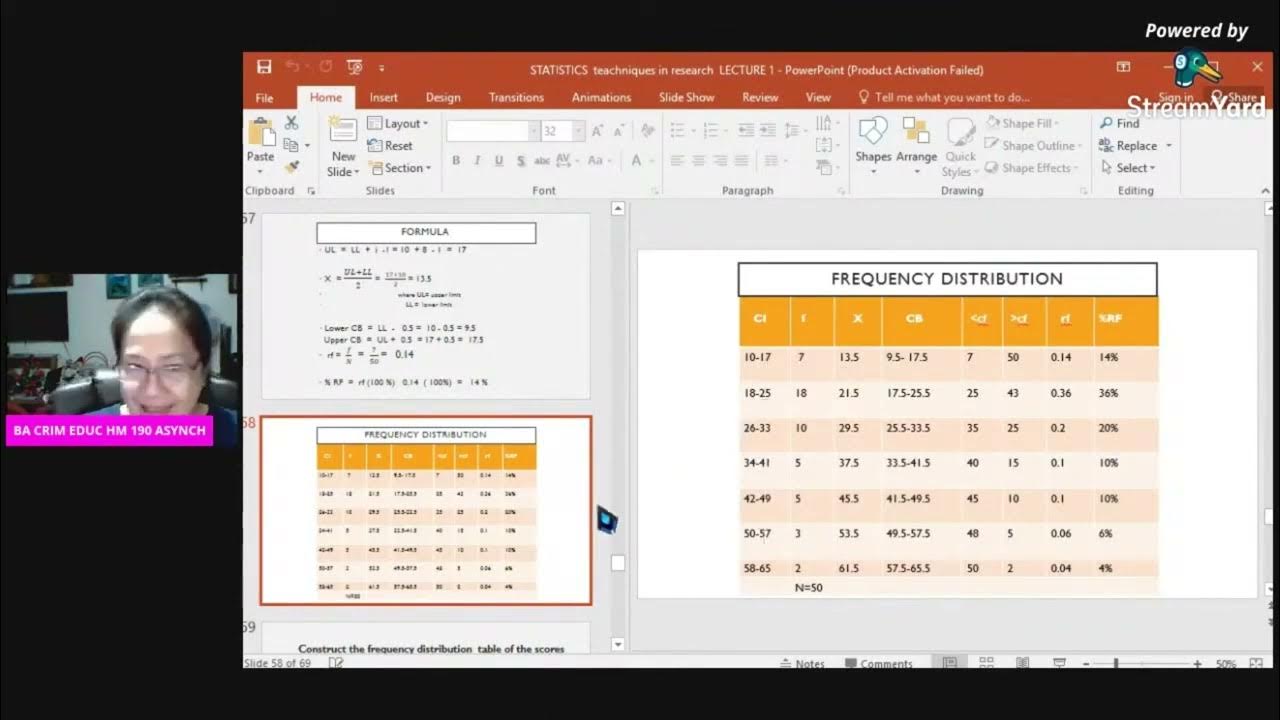MÉDIA, MODA e MEDIANA | RÁPIDO E FÁCIL
Summary
TLDRIn this engaging tutorial, the speaker breaks down essential statistical concepts including the arithmetic mean, weighted mean, median, and mode. With practical examples, the speaker shows how to calculate the mean, explaining division and handling decimals. The weighted mean is introduced using real-life scenarios like calculating grades with different weights. The median is explained through ordered sets of numbers, with tips for handling both odd and even values. The mode is explored, demonstrating unimodal, bimodal, and amodal distributions. The friendly tone and interactive examples make the lesson accessible and enjoyable for learners.
Takeaways
- 😀 The arithmetic mean (average) is calculated by adding all values and dividing by the number of values.
- 😀 The weighted mean involves multiplying each value by its weight and then dividing the sum by the total weight.
- 😀 For example, to calculate a weighted mean, you multiply each score by its respective weight and sum those results, then divide by the sum of the weights.
- 😀 The median is the middle value in an ordered dataset. If the number of values is odd, it's the middle one; if even, it's the average of the two middle values.
- 😀 If there are two middle values in a dataset, the median is their average.
- 😀 The mode is the most frequently occurring value in a dataset. If no values repeat, the dataset is amodal (no mode).
- 😀 If there are two values that appear with the same highest frequency, the dataset is bimodal.
- 😀 In a dataset with multiple modes, the dataset is multimodal.
- 😀 For calculating the median, it is crucial to sort the values in ascending order before determining the central value.
- 😀 Understanding weighted means is important when dealing with scores or values that have different levels of importance or weight.
Q & A
What is the definition of arithmetic mean?
-The arithmetic mean is the sum of all values divided by the total number of values.
How do you calculate the arithmetic mean of the numbers 0, 4, and 8?
-To calculate the arithmetic mean, add the values: 0 + 4 + 8 = 12, then divide by the total number of values (3). So, 12 ÷ 3 = 4.
What should you do if the result of the arithmetic mean calculation doesn't match any of the options?
-If the result isn't an exact match, you should carefully check the division and adjust by adding decimals as needed, such as adding a decimal point and calculating further.
What is the concept of weighted arithmetic mean?
-A weighted arithmetic mean involves multiplying each value by a weight, then summing the products and dividing by the total of the weights.
How would you calculate the weighted average if the first semester grade is 4 (weight 1), second semester is 6 (weight 2), third is 5 (weight 3), and fourth is 10 (weight 4)?
-Multiply each grade by its corresponding weight and sum: (4 x 1) + (6 x 2) + (5 x 3) + (10 x 4) = 4 + 12 + 15 + 40 = 71. The sum of the weights is 1 + 2 + 3 + 4 = 10. So, the weighted mean is 71 ÷ 10 = 7.1.
What is the process for calculating the median of a set of numbers?
-To calculate the median, first arrange the numbers in ascending order. If there is an odd number of values, the median is the middle value. If there is an even number of values, the median is the average of the two central values.
How would you find the median in a set with an even number of values, such as [2, 3, 3, 4, 7, 11]?
-First, arrange the numbers in order: [2, 3, 3, 4, 7, 11]. Since there are six values, the median is the average of the third and fourth values. So, (3 + 4) ÷ 2 = 3.5.
What is the definition of 'mode' in statistics?
-The mode is the value that appears most frequently in a data set.
If a data set has no repeated values, like [1, 2, 3, 4], what is the mode?
-If no values are repeated, the data set is said to be 'amodal,' meaning there is no mode.
What happens if a data set has two values that occur the same number of times, like [2, 2, 3, 3]?
-If two values appear with the same frequency, the data set is considered bimodal, with both values being the modes.
Outlines

此内容仅限付费用户访问。 请升级后访问。
立即升级Mindmap

此内容仅限付费用户访问。 请升级后访问。
立即升级Keywords

此内容仅限付费用户访问。 请升级后访问。
立即升级Highlights

此内容仅限付费用户访问。 请升级后访问。
立即升级Transcripts

此内容仅限付费用户访问。 请升级后访问。
立即升级浏览更多相关视频

STATISTIKA: Ukuran gejala pusat dan ukuran letak 1

Statistika Dasar Ukuran Pemusatan Data (Mean, Modus, Median) Data Tunggal dan Data Kelompok

2ª SÉRIE - ENS. MÉDIO - FASE 13 - DESAFIO CRESCER - MATEMÁTICA

Statistika : Cara mudah menentukan nilai Mean, median dan modus data kelompok

ESTATÍSTICA ENEM I MÉDIA, MODA e MEDIANA

BA CRIM EDUC HM 190 VIDEO 1 2024
5.0 / 5 (0 votes)
